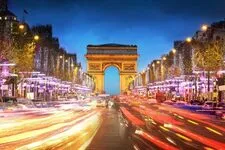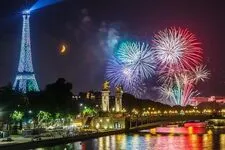Covered passages in Paris The Covered Passages of Paris

Highly sought after by tourists yet somewhat neglected by Parisians who prefer modern shopping centers, the covered passages are nonetheless among the most remarkable witnesses of the History of Paris.
Covered passages attracted wealthy Parisians in the early 19th century... The typical charm of these private shopping streets, yet open to the public, immerses the shopper and the tourist in the heart of the era of Victor Hugo, Gustave Flaubert, and other great figures in the History of France. Housing shops and residences, a large portion of the covered passages is located on the right bank, near the Grands Boulevards. In the early 19th century, these covered streets mainly served to attract the city's wealthy clientele who enjoyed strolling for hours among the shops while remaining protected from the weather, the hustle and bustle, and the dirt of the city. With their rococo decor and luxury boutiques, the galleries were highly appreciated by the wealthiest Parisian clientele who found the most upscale shops, the most enticing restaurants, the most sought-after art galleries, and the most refined tea rooms.
The must-sees in Paris
"...but they will not withstand the rise of department stores. The majority of the covered galleries and passages in Paris were built during the Restoration, between 1800 and 1850. Constructed between buildings and topped with large glass roofs allowing daylight to filter through, the galleries offer passersby a completely different face once night falls, when the storefronts of typical French shops remain illuminated by the soft yellow lights of gas lighting at the time, and by modern fixtures today.
By 1850, the capital was teeming with passages and galleries – there were up to 150 at that time – whose success would be widely exported abroad by the end of the century. However, the wide open avenues of Baron Haussmann, along with the rapid popularity of the department stores lining them, would sound the death knell for the covered passages, most of which would be largely destroyed. Today, only twenty-five remain."







